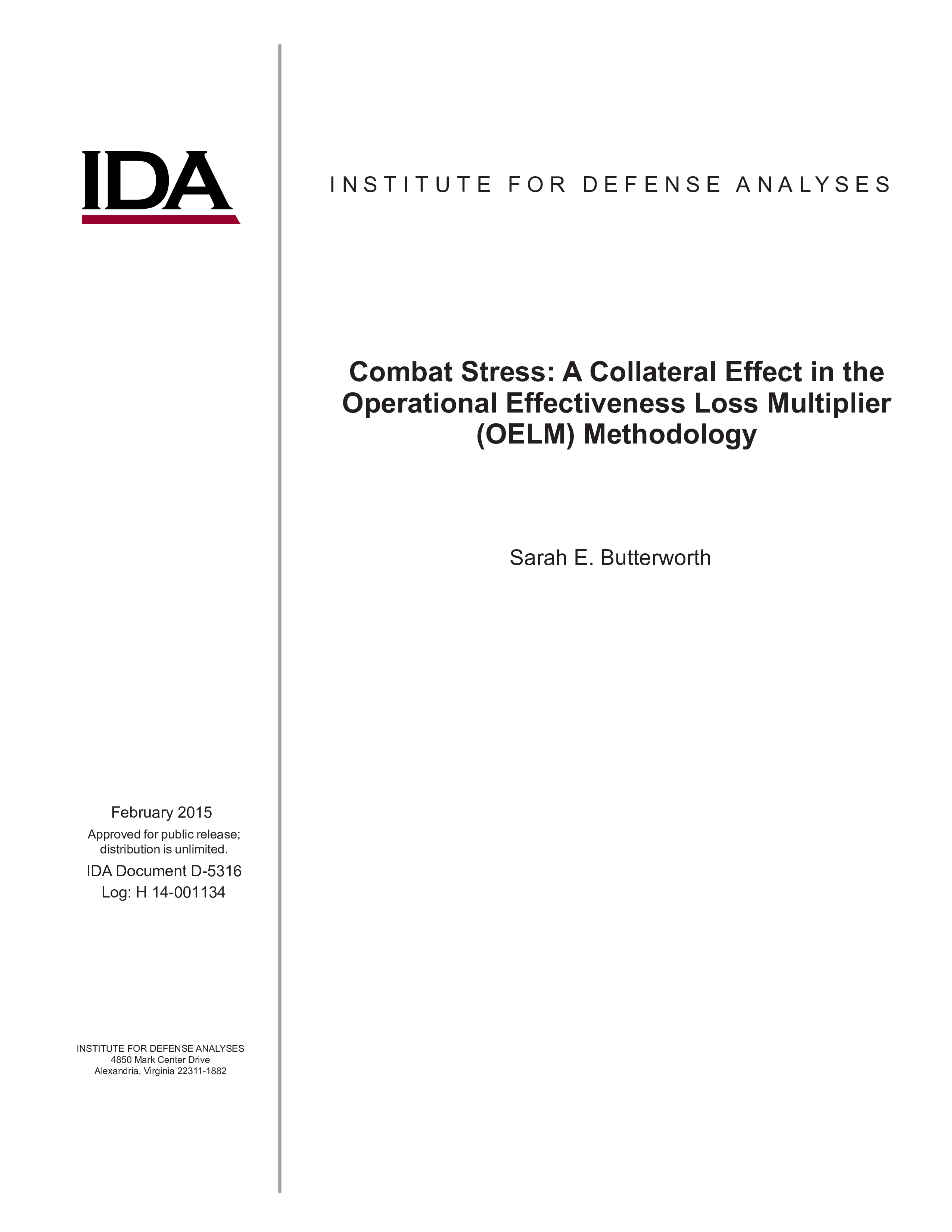An IDA research team designed the Operational Effectiveness Analysis (OEA) methodology to estimate a military unit’s operational
effectiveness on the battlefield following a chemical, biological, radiological, and nuclear (CBRN) event. As part of the OEA effort, the
team developed the Operational Effectiveness Loss Multiplier (OELM) methodology to examine the collateral effects of CBRN events on
operational effectiveness. Within the OELM methodology, combat stress is viewed as a collateral effect arising from the conditions and
experience of CBRN events. The potential of combat stress to degrade individual and unit operational effectiveness makes it an important
aspect of the OEA and OELM research and methodologies. This document discusses combat stress and its implications on operational
effectiveness; combat and operational stress reaction (COSR) in service members; and civilian psychological casualties (CPC) and combat
stress casualties (CSC) as a result of CBRN and non-CBRN events. It establishes clear and formal definitions of terms relevant to combat
stress; discusses the current data available to model and estimate CPC and CSC resulting from CBRN and non-CBRN events; and proposes
further research to aid in the estimation of CSC and CPC in the future.

